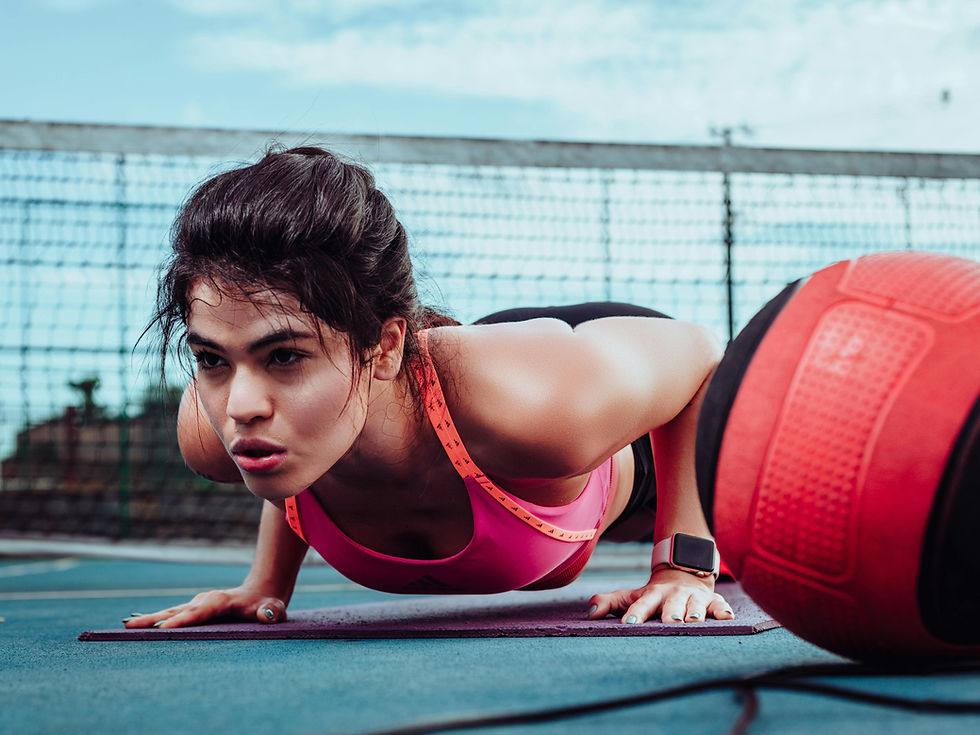Over 60? The Benefits of Regular Exercise for Older Adults
- Ariela Liberman

- Aug 15, 2022
- 4 min read
Updated: Aug 17, 2023
We all get older, that's a fact of life, but that doesn't mean we have to lead a less active, healthy, or interesting lifestyle. Although older adults may have less strength, stamina, and energy than at a younger age, physical activity is still extremely beneficial, and even encouraged!
This also applies to older adults with medical conditions, as fitness can be adjusted to any level to ensure a safe and effective workout. If you are over 60 and don't currently exercise, it's never too late to start!

Why Exercise is Important for Older Adults
Exercising can seem like a hassle at times, especially as you get older, but it is important to maintain your quality of life. Life can become less enjoyable when you have to endure chronic pain or other health issues. Physical activity is a form of prevention for health issues such as heart disease, diabetes, stroke, dementia, and muscle atrophy.
What Are the Benefits For Older Populations?
There are many benefits of regular exercise for older adults, including increased strength, the ability to live more independently, and decreased risk of illness to name a few.
Builds Strength
As we age, we lose bone mass, women being especially susceptible to this. With bone mass loss comes more possibility for broken bones when a fall takes place, which is why building strength is essential at an older age. Through strength training exercises, bone loss is not only reduced but can be restored.
Creates Independent Living
When we get older, everyday activities and movements can become more challenging. Living an independent lifestyle requires the capability of daily movements, whether that's bending, reaching, walking, or others. Regular exercise as an older adult is essential to maintaining this level of independence, as it can be unsafe to be alone if a fall or injury happens.
Decreases Risk of Chronic Illness
According to a study done over 10 years, adults who were involved in the highest levels of physical activity were twice as likely to avoid illnesses such as heart disease, diabetes, cancer, angina, and stroke. Not only are you more likely to avoid disease, but you will also be in more optimal shape physically and mentally, allowing you to live a better quality of life.
What Types of Exercise Are Recommended?

The World Health Organization recommends aerobic and strength exercise along with balance training for older adults. Low-impact exercises such as swimming, cycling, and yoga, are also great options as the wear and tear on your joints will be minimized.
Swimming
Gentle on joints: Swimming is an easier activity for people with orthopedic issues because it reduces the pressure on your joints due to the water's support of the body.
Reduces risk of falls: According to an Australian study of older men, swimming reduced the risk of falling by 33%. Swimming develops strong core muscles, essential for balance, and ultimately fall prevention.
Improves flexibility & range of motion: Every swimming movement requires your whole body to be in motion, lengthening the muscles and overall stretching the body.
Improves muscle strength & tone: Swimming is a great low-impact exercise to build strength, as it is a form of resistance training. Your body pushes and pulls against the water when swimming, which builds strength and tones muscles.
Cycling
Reduces risk of falls: According to a study, older adults who cycle frequently performed better on measures of balance, which is essential in fall prevention.
Weight Loss: Cycling is a cardio exercise, meaning you can burn calories and lose weight. The amount of calories burned depends on the intensity and whether you are biking outside or on a stationary bike, but overall, cycling will improve your fitness!
Prevents Cognitive Decline: Cycling can prevent cognitive decline by increasing BDNF, or brain-derived neurotrophic factor. This molecule in the brain protects against damage, and reduced levels of this have been connected to memory loss.
Yoga
Improves flexibility: Osteoarthritis is a common problem in older adults that can cause pain and stiffness in joints. A study showed that yoga produced therapeutic benefits for older adults, especially those who suffer from osteoarthritis.
Reduces blood pressure: High blood pressure can cause potentially fatal heart problems, but luckily yoga has been proven to significantly lower blood pressure and improve antioxidant defense.
Enhances respiratory function: The aging process can limit the respiratory system, making it harder to breathe and decreasing physical endurance. A study of older women presented the results that yoga can actually increase respiratory function.
Looking for a more social scene? Here at Fit Societe, we have a low-impact group exercise class catered towards beginners and older adults - Fit4Life! Our Fit4Life classes focus on mobility and strength training at a lower intensity, as well as allowing class-goers to move at their own pace.
How Much Exercise is Recommended for Older Adults?
The National Institute of Aging recommends 150 minutes or 2 and a half hours a week of moderate-intensity exercise. Engaging in physical activity three days a week is suggested, but everyone has different needs and capabilities, so you can figure out what is best for you. Dynamic training is also advised for a well-rounded routine, for example, aerobic exercise mixed with strength training.
Interested in Fit4Life?
Before you attend one of our classes, we recommend booking a free consultation where an FS coach will perform a body evaluation, and assess your fitness goals and needs to get you on a custom path.
Ariela Liberman is a Marketing Associate and a staff writer for Fit Societe, with a Bachelor of Arts in Media Studies. Born and raised in San Diego, she is a Southern California native with a passion for writing, digital marketing, health, and wellness.



Loved this, awesome post, thanks! Veronica Dantas